
When one country’s cuisine finds its way overseas, things are often lost in translation, either due to the limited availability of certain ingredients or because of differences in local tastes. Japan is just as guilty as any country for offering “foreign” foods that would never be found in the countries they originated from, but Japanese food has not escaped the same type of butchering, as the likes of sushi and ramen gain popularity around the world.
Just as any American is likely to be surprised by some of the things Denny’s and McDonald’s in Japan have on offer, one of RocketNews24’s Japanese writers got a bit of a surprise when he checked the menu at a sushi restaurant in the Netherlands.
Ask anyone what comes to their mind when they think of Japanese food, and sushi is likely to be at the top of the list. Japanese restaurants have seen a rather large boom in the west in recent years, with sushi in particular gaining most of the popularity. But most of the sushi you’re likely to find are things the Japanese people would never even recognize as sushi, like those creative inside-out caterpillar or California rolls you may be so fond of.
During a recent visit to the Netherlands, RocketNews24’s writer Yuichirou braved a foreign sushi restaurant to try their fare, and was quite baffled at what showed up on the menu.
Tofu sushi? He read the words again. Yes, this really was sushi with a topping, or neta, not of fish, vegetables, or even rolled egg, but bean curd. Yuichirou was seriously weirded out by the very thought of such a creation.
Tofu has been widely available in western grocery markets for years, and is either known as that life-saving flavor-chameleon meat replacer, or that bland white squishy blob of stuff, depending largely on how you were first introduced to it. While sushi can appear in many forms, in Japan the type most commonly found is nigirizushi, which is simply a slice of raw fish resting atop a bite-sized mound of rice.
▼Not fond of raw? You can also find things like broiled salmon or sweet omelet
So, when Yuichirou found tofu sushi on the menu, he had visions of a sliver of some bland, white bean curd served on top of sushi rice. Still, for the sake of investigative journalism, he ordered a plate and waited for it to arrive. How pleasantly surprised he was, then, when it arrived and he saw that “tofu sushi” was in fact a type of sushi he was rather familiar with after all. Sushi lovers, can you guess what it is?
It was, in fact…
…
…
…
…inarizushi! Although served a bit differently than it is normally, the combination of vinegary sushi rice and the sweetened pockets of aburaage, or fried tofu skins, was the same.
▼You’ll typically find the rice stuffed inside the the tofu skins.
Among the choices the restaurant offered were inside-out rolls that westerners are probably more familiar with…
▼The “beef roll”, though sprinkled with shichimi spice, is still mild enough for the average Japanese palette.
▼The “deep fried shrimp”, wrapped with avocado and covered on the outside with tobikko, or flying fish roe.
▼A spicy tuna roll. That sauce definitely marks it as a foreign creation!
▼The “Sumo roll”, aptly named for its size, is somewhat reminiscent of the Japanese futomaki roll
▼Though you’d be very hard pressed to find cream cheese making an appearance in any sushi in Japan, our Yuichirou was rather fond of this “salmon cream cheese” roll. Having lived in the Northwestern United States and eaten my fair share of Seattle rolls, I can personally vouch for their deliciousness as well.
But our man also found that the restaurant served a healthy selection of the more traditional fare that the Japanese think of when it comes to sushi.
▼”We likes it rrrraw, and wrrrriggling!”
▼During the restaurant’s lunchtime hours, you can eat your fill for 18.5 euros (USD$20.60)
Delicious eats aside, probably the best part of Yuichirou’s foreign sushi experience was the fact that he got to enjoy some inari – a slang term that can be used to refer to a man’s testes – in the town of Scheveningen, which, due to the phonetic limitations of the Japanese language, often gets mispronounced as “Sukebeningen” (スケベニンゲン), meaning “perverted person”. Doesn’t get more grade school than that!
Restaurant details
Sumo Sushi & Grill Restaurant
Address: Palacestraat 8, 2586 HX Scheveningen, Netherlands
Hours: 12pm – 10pm
Photos © RocketNews24
[ Read in Japanese ]

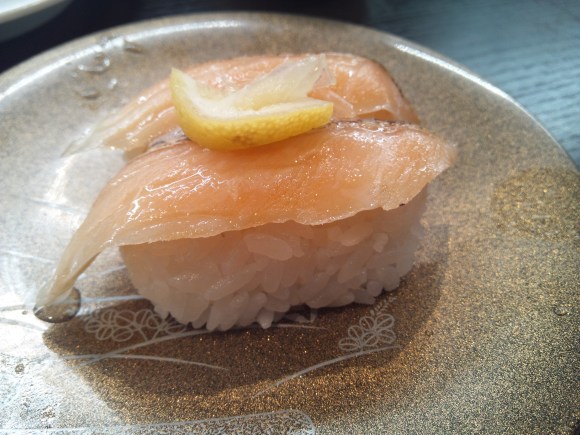
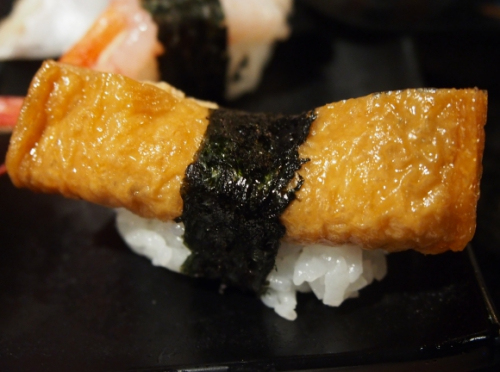
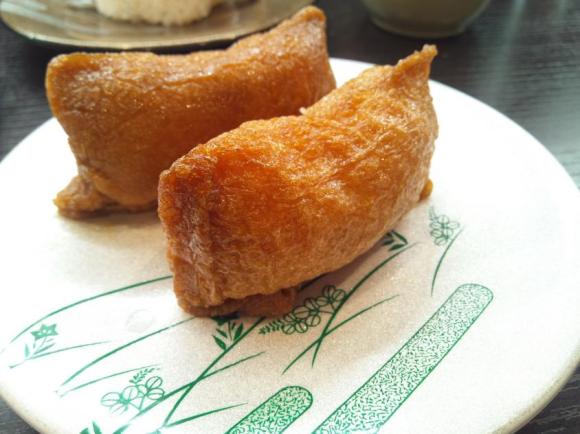
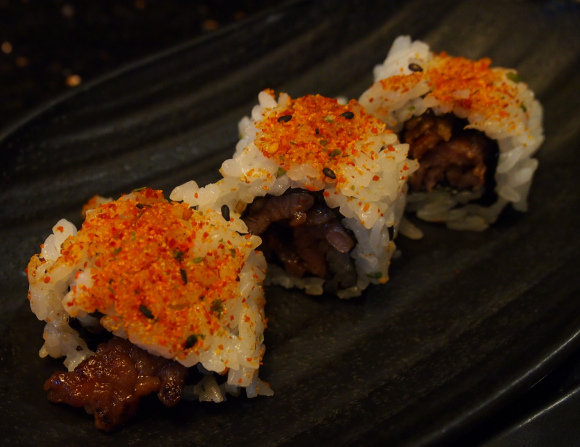
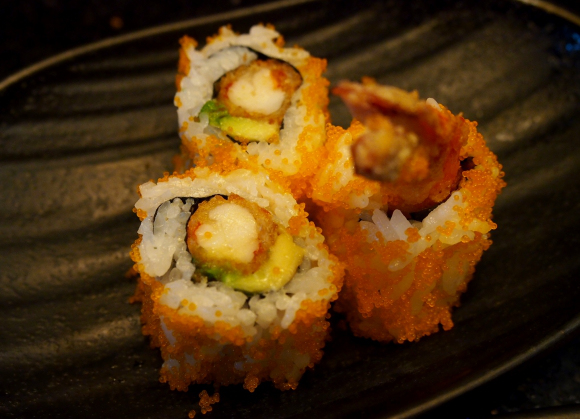
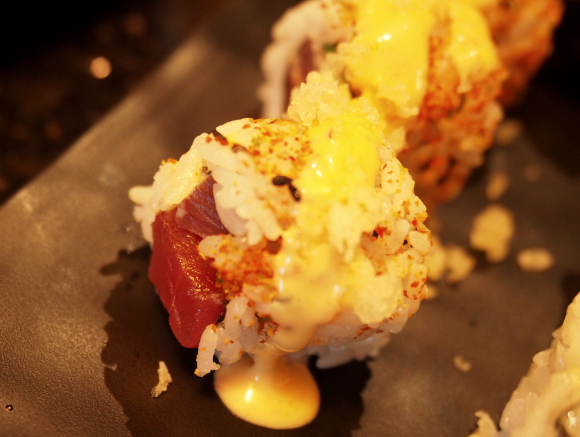
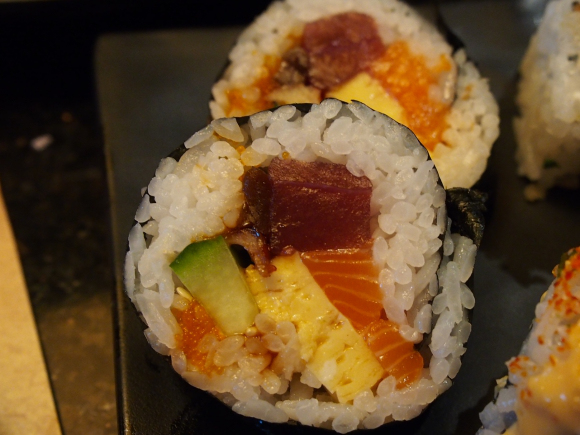
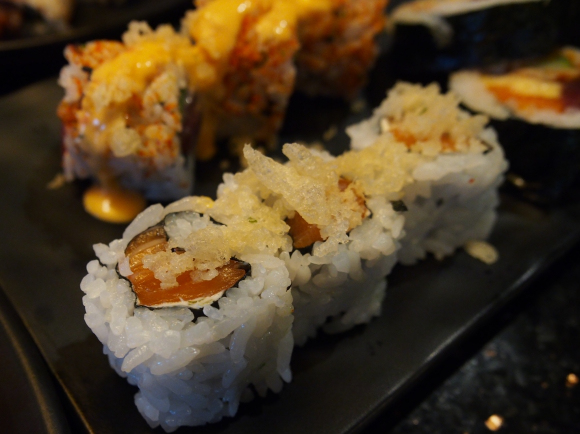
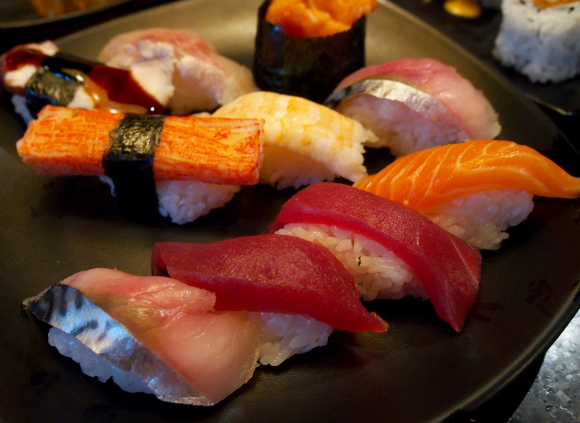
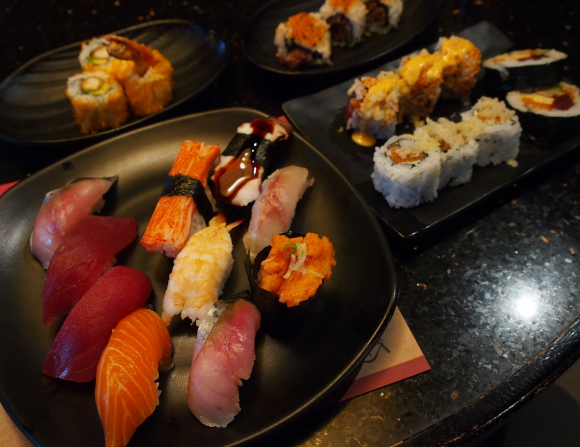
 Our Japanese-language writers taste and compare sushi from around the world
Our Japanese-language writers taste and compare sushi from around the world How to have a great meal at conveyer belt sushi chain Kura Sushi even if you hate raw fish
How to have a great meal at conveyer belt sushi chain Kura Sushi even if you hate raw fish Can’t go to conveyor belt sushi? Major Japanese chain will bring the conveyor belt to you!
Can’t go to conveyor belt sushi? Major Japanese chain will bring the conveyor belt to you! We head to France to try Nutella sushi
We head to France to try Nutella sushi Here’s what a 10,000-yen Sushi Cake from Japan looks like
Here’s what a 10,000-yen Sushi Cake from Japan looks like McDonald’s new Happy Meals offer up cute and practical Sanrio lifestyle goods
McDonald’s new Happy Meals offer up cute and practical Sanrio lifestyle goods All-you-can-drink Starbucks and amazing views part of Tokyo’s new 170 meter-high sky lounge
All-you-can-drink Starbucks and amazing views part of Tokyo’s new 170 meter-high sky lounge Super Nintendo World expansion gets delayed for several months at Universal Studios Japan
Super Nintendo World expansion gets delayed for several months at Universal Studios Japan More foreign tourists than ever before in history visited Japan last month
More foreign tourists than ever before in history visited Japan last month Beautiful Sailor Moon manhole cover coasters being given out for free by Tokyo tourist center
Beautiful Sailor Moon manhole cover coasters being given out for free by Tokyo tourist center Hamster abandoned at Tokyo ramen restaurant gets new home
Hamster abandoned at Tokyo ramen restaurant gets new home Studio Ghibli glasses cases let anime characters keep an eye on your spectacles
Studio Ghibli glasses cases let anime characters keep an eye on your spectacles Arrest proves a common Japanese saying about apologies and police
Arrest proves a common Japanese saying about apologies and police McDonald’s Japan releases a pancake pie for new retro kissaten coffeeshop series
McDonald’s Japan releases a pancake pie for new retro kissaten coffeeshop series Starbucks reopens at Shibuya Scramble Crossing with new look and design concept
Starbucks reopens at Shibuya Scramble Crossing with new look and design concept Disney princesses get official manga makeovers for Manga Princess Cafe opening in Tokyo
Disney princesses get official manga makeovers for Manga Princess Cafe opening in Tokyo Beautiful new Final Fantasy T-shirt collection on the way from Uniqlo【Photos】
Beautiful new Final Fantasy T-shirt collection on the way from Uniqlo【Photos】 Is the new Shinkansen Train Desk ticket worth it?
Is the new Shinkansen Train Desk ticket worth it? Foreign English teachers in Japan pick their favorite Japanese-language phrases【Survey】
Foreign English teachers in Japan pick their favorite Japanese-language phrases【Survey】 Japanese convenience store packs a whole bento into an onigiri rice ball
Japanese convenience store packs a whole bento into an onigiri rice ball We try out “Chan Ramen”, an underground type of ramen popular in the ramen community
We try out “Chan Ramen”, an underground type of ramen popular in the ramen community Studio Ghibli releases Kiki’s Delivery Service chocolate cake pouches in Japan
Studio Ghibli releases Kiki’s Delivery Service chocolate cake pouches in Japan Japan’s bone-breaking and record-breaking roller coaster is permanently shutting down
Japan’s bone-breaking and record-breaking roller coaster is permanently shutting down New definition of “Japanese whiskey” goes into effect to prevent fakes from fooling overseas buyers
New definition of “Japanese whiskey” goes into effect to prevent fakes from fooling overseas buyers Our Japanese reporter visits Costco in the U.S., finds super American and very Japanese things
Our Japanese reporter visits Costco in the U.S., finds super American and very Japanese things Studio Ghibli unveils Mother’s Day gift set that captures the love in My Neighbour Totoro
Studio Ghibli unveils Mother’s Day gift set that captures the love in My Neighbour Totoro Foreign passenger shoves conductor on one of the last full runs for Japan’s Thunderbird train
Foreign passenger shoves conductor on one of the last full runs for Japan’s Thunderbird train Domino’s Japan now sells…pizza ears?
Domino’s Japan now sells…pizza ears? New Japanese KitKat flavour stars Sanrio characters, including Hello Kitty
New Japanese KitKat flavour stars Sanrio characters, including Hello Kitty Kyoto creates new for-tourist buses to address overtourism with higher prices, faster rides
Kyoto creates new for-tourist buses to address overtourism with higher prices, faster rides Sales of Japan’s most convenient train ticket/shopping payment cards suspended indefinitely
Sales of Japan’s most convenient train ticket/shopping payment cards suspended indefinitely Sold-out Studio Ghibli desktop humidifiers are back so Totoro can help you through the dry season
Sold-out Studio Ghibli desktop humidifiers are back so Totoro can help you through the dry season Japanese government to make first change to romanization spelling rules since the 1950s
Japanese government to make first change to romanization spelling rules since the 1950s Ghibli founders Toshio Suzuki and Hayao Miyazaki contribute to Japanese whisky Totoro label design
Ghibli founders Toshio Suzuki and Hayao Miyazaki contribute to Japanese whisky Totoro label design Doraemon found buried at sea as scene from 1993 anime becomes real life【Photos】
Doraemon found buried at sea as scene from 1993 anime becomes real life【Photos】 Tokyo’s most famous Starbucks is closed
Tokyo’s most famous Starbucks is closed One Piece characters’ nationalities revealed, but fans have mixed opinions
One Piece characters’ nationalities revealed, but fans have mixed opinions We asked a Uniqlo employee what four things we should buy and their suggestions didn’t disappoint
We asked a Uniqlo employee what four things we should buy and their suggestions didn’t disappoint Princesses, fruits, and blacksmiths: Study reveals the 30 most unusual family names in Japan
Princesses, fruits, and blacksmiths: Study reveals the 30 most unusual family names in Japan There’s only one place in Japan where this kind of sushi isn’t red, but why?
There’s only one place in Japan where this kind of sushi isn’t red, but why? Our Japanese-born reporter gets some culture shock at Mexico City’s most popular sushi chain
Our Japanese-born reporter gets some culture shock at Mexico City’s most popular sushi chain This homemade panda sushi from Japan contains no meat or fish, but tons of cuteness
This homemade panda sushi from Japan contains no meat or fish, but tons of cuteness Nadeshico Sushi restaurant challenges gender roles with all-female staff clad in kimono
Nadeshico Sushi restaurant challenges gender roles with all-female staff clad in kimono We try a rotating sushi restaurant in New Delhi, are surprised to find no rotating sushi
We try a rotating sushi restaurant in New Delhi, are surprised to find no rotating sushi Our Japanese language reporter visits Barcelona, decides to try Spanish “hosho maki” sushi
Our Japanese language reporter visits Barcelona, decides to try Spanish “hosho maki” sushi Which Japanese conveyor belt sushi chain has the best scallop sushi?【Taste test】
Which Japanese conveyor belt sushi chain has the best scallop sushi?【Taste test】 Restaurant by Tokyo SkyTree perfects Inari Sushi, sells nothing else for 40 years
Restaurant by Tokyo SkyTree perfects Inari Sushi, sells nothing else for 40 years Takoyaki sushi rolls at popular Japanese chain take California rolls to a whole new level
Takoyaki sushi rolls at popular Japanese chain take California rolls to a whole new level Does how you dress affect what a sushi restaurant serves you? We experiment in Ginza
Does how you dress affect what a sushi restaurant serves you? We experiment in Ginza Here’s the reason why your expensive ikura sushi often comes with some cheap cucumber slices
Here’s the reason why your expensive ikura sushi often comes with some cheap cucumber slices This restaurant’s US$0.45 sushi is an amazing way to expand your sushi horizons in Tokyo
This restaurant’s US$0.45 sushi is an amazing way to expand your sushi horizons in Tokyo Japan’s oldest sushi train serves up unorthodox Blueberry Cream Sushi
Japan’s oldest sushi train serves up unorthodox Blueberry Cream Sushi We try dessert sushi (with a French twist!)【Recipe】
We try dessert sushi (with a French twist!)【Recipe】 Three Kyoto sushi shops are sending girls reeling in culinary delight
Three Kyoto sushi shops are sending girls reeling in culinary delight
Leave a Reply